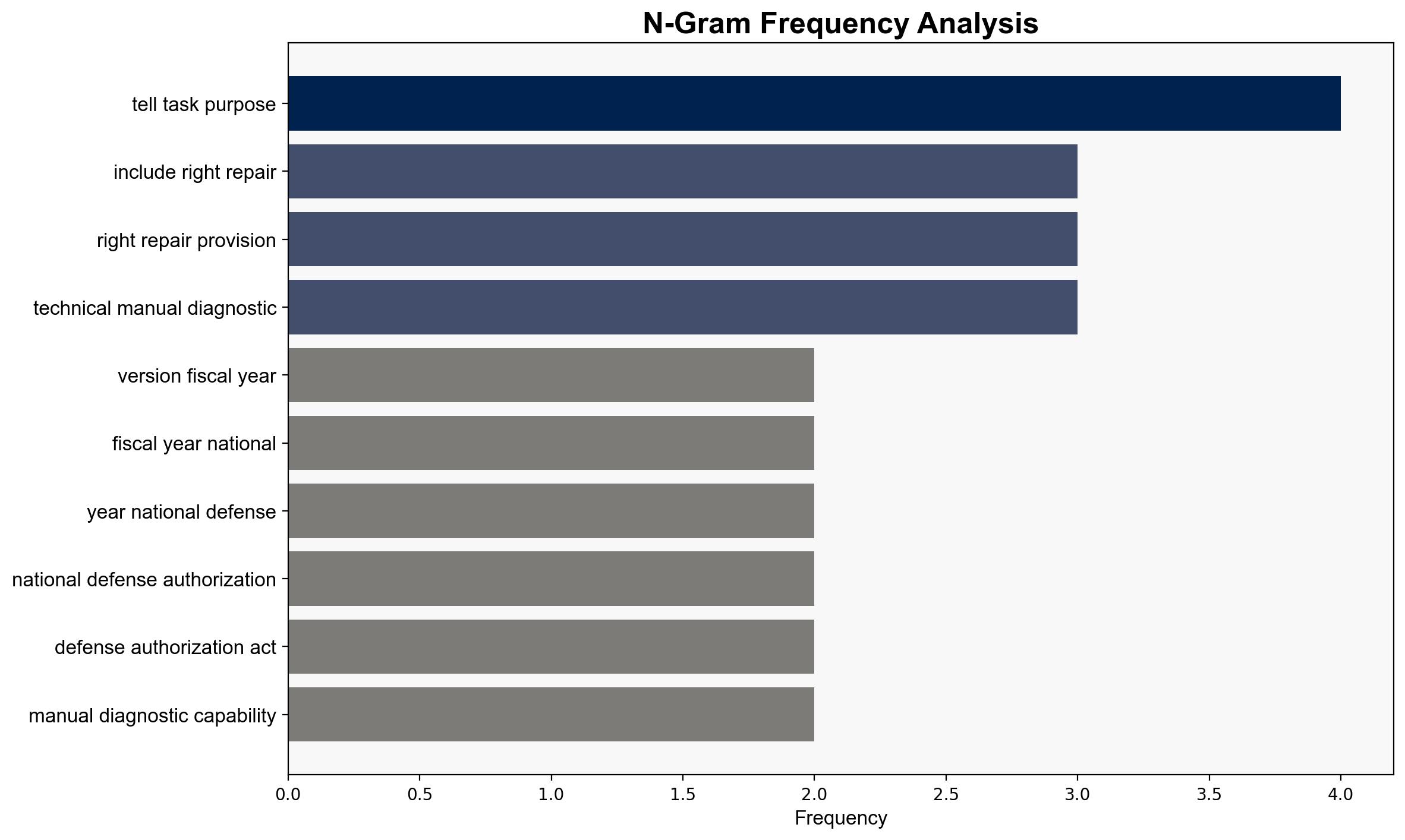The Army and Navy want the right to repair their own equipment – Task & Purpose
Published on: 2025-07-11
Intelligence Report: The Army and Navy Want the Right to Repair Their Own Equipment – Task & Purpose
1. BLUF (Bottom Line Up Front)
The U.S. Army and Navy are advocating for the right to repair their own equipment, challenging existing military contracting rules that currently require defense contractors to handle repairs. This push aims to enhance operational readiness, reduce downtime, and increase autonomy for service members. The strategic implications include potential shifts in military procurement policies and the empowerment of military personnel to perform essential repairs, thereby reducing reliance on civilian contractors in conflict zones.
2. Detailed Analysis
The following structured analytic techniques have been applied to ensure methodological consistency:
Cognitive Bias Stress Test
The analysis identifies potential biases in the assumption that military personnel lack the capability to perform complex repairs. By challenging this notion, the report highlights the potential benefits of empowering service members with the necessary tools and training.
Bayesian Scenario Modeling
Probabilistic forecasting suggests a moderate likelihood of policy changes favoring the right to repair, contingent on legislative support and successful pilot programs demonstrating improved readiness.
Network Influence Mapping
The influence of defense contractors is significant, but there is growing support from lawmakers and oversight groups advocating for change. This shift in influence dynamics could impact future defense procurement strategies.
3. Implications and Strategic Risks
The move towards granting repair rights could disrupt existing contractor relationships, potentially leading to legal challenges or lobbying efforts to maintain the status quo. Additionally, there is a risk of inadequate training leading to improper repairs, which could compromise equipment functionality. However, successful implementation could enhance military resilience and reduce logistical burdens in conflict zones.
4. Recommendations and Outlook
- Implement pilot programs to assess the feasibility and impact of granting repair rights to military personnel.
- Develop comprehensive training programs to ensure service members are equipped to handle complex repairs safely.
- Engage with stakeholders, including lawmakers and oversight groups, to build support for legislative changes.
- Scenario Projections:
- Best Case: Successful integration of repair rights leads to enhanced readiness and reduced costs.
- Worst Case: Legal challenges and inadequate training result in operational setbacks.
- Most Likely: Gradual policy shifts with mixed outcomes, requiring ongoing adjustments.
5. Key Individuals and Entities
Greg Williams, Pete Hegseth, Elias Chelala, Ron Flander
6. Thematic Tags
military logistics, defense procurement, operational readiness, legislative reform




